33,000 AI Drone Kits Supercharge Ukraine’s Battlefield Edge
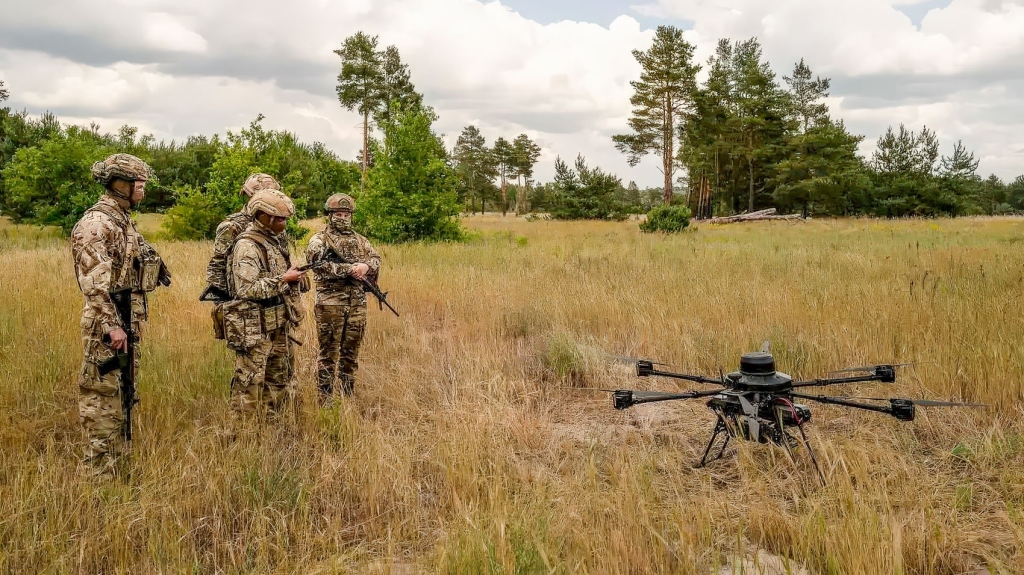
Hello fellow drone pilots! How’s your sunrise flying going? Did your bird nail the perfect golden-hour shot, or did it decide to update firmware again and turn itself into a paperweight just as the light peaked? If so, don’t worry—you’re not alone! Turns out, even on the battlefield, drone pilots struggle with surprises… except the stakes are a lot higher than missing Snap-worthy footage.
Today, we’re talking about something that would make even a seasoned pilot spit out their morning coffee: Ukraine is set to receive a mind-blowing 33,000 advanced Skynode-S AI drone kits, courtesy of a $50 million Pentagon and Auterion tag team, as Forbes informs us.

Why is every drone nerd on both sides of the Atlantic buzzing? Strap in, because this is more than another box of nifty electronics—this feels like an evolutionary leap in how drones wage war, dodge jamming, and maybe, just maybe, teach us a thing or two about resilience and innovation.
What in the World is a Skynode-S Drone Kit?
Let’s start with the basics, because if you’re anything like me, “Skynode” sounds suspiciously close to “Skynet,” and we all know how that went for humanity in the movies.
Skynode-S kits are compact, AI-powered brains for drones. Think of them as the quadcopter’s cerebral cortex: they combine a rugged flight controller, vision-processing unit, encrypted radio, and just enough computing muscle to track moving targets all by themselves—even when GPS goes dark or Russian jamming tries to knock them out of the sky. Stealthy, tough, and clever—what more could you ask for, right?
- Size: About as small as a chunky deck of cards (49x39x21mm, 38g), so even your FPV racer could fit one.
Power: Quad-core ARM Cortex-A53 processor, beefy onboard AI for real-time image analysis and autonomous tracking.
Range: Can lock onto moving targets up to 1km away, boasting up to 90% hit probability—even with aggressive electronic warfare in play.
- Versatility: Plugs right into everything from hobbyist FPVs to fixed-wing UAVs. As easy as replacing your worn-out VTX module—no soldering iron required (well, maybe just a little).
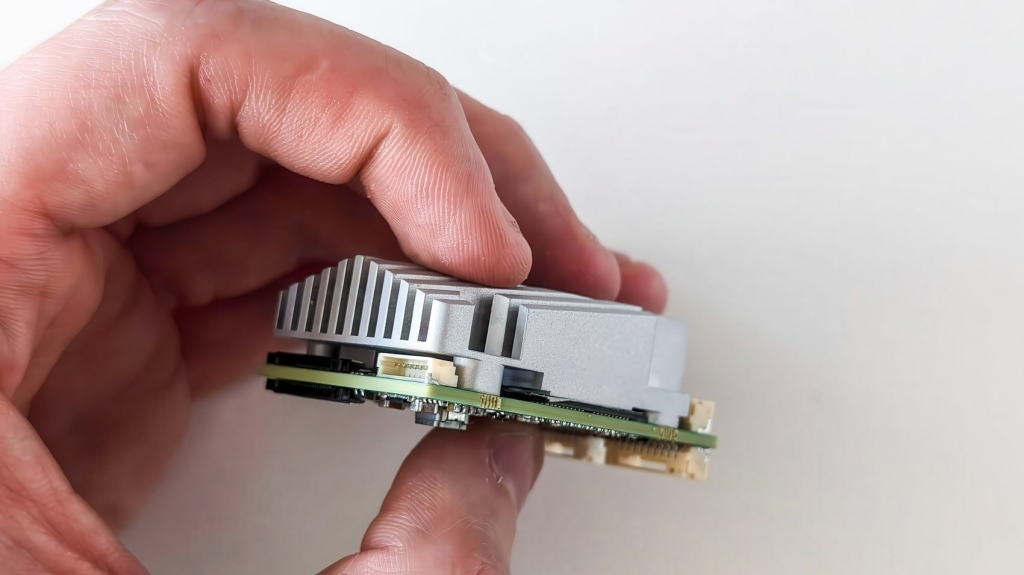
Remember those moments when your drone loses signal halfway through an epic flight, and you do the anxious controller dance? Now imagine your drone just shrugging, saying, “I got this,” and continuing a flawless pursuit, even if the Russians are cranking up the jammers.
The Russo-Ukrainian Drone Race: From Stalemate to Supremacy
For three years, the skies over Ukraine have been a wild, high-stakes game of cat and mouse. Both sides threw money, brainpower, and—yes—sheer stubbornness into countering one another with drones and electronic warfare. Recently, Russia pulled ahead, introducing fiber-optic and AI-assisted drones that sliced through traditional jamming like a hot knife through TGI Fridays’ cheesecake.
Suddenly, Russia started dominating key highways, zapping Ukrainian convoys, and pulling off precision strikes with a confidence that would make even the most cocky Mavic pilot blush.
Ukraine’s answer? Massive domestic drone production AND, now, this deluge of Skynode-S kits—AI brains designed to spot, track, and intercept those Russian drones like a dog with bacon-scented frisbees. With 33,000 kits, even “just” 70–80% efficiency could mean more than 23,000 enemy drones neutralized. At 90%, you’re talking up to 29,000 fewer Russian gadgets darkening Ukraine’s skies.
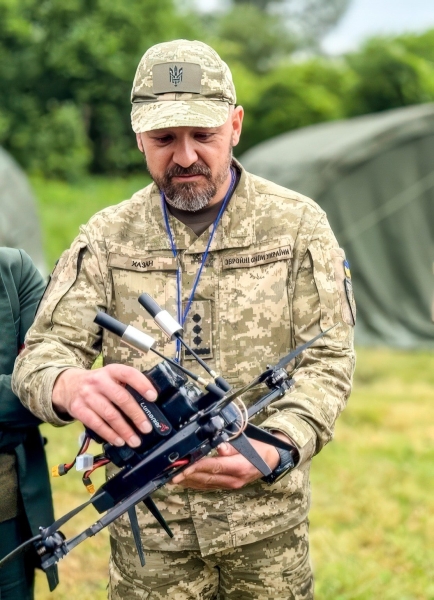
How Skynode-S Turns Ordinary FPVs Into Battlefield Avengers
Let’s get real: regulations are a distant memory out there, and “safe flying” isn’t about dodging soccer balls in the park—it’s about outsmarting Shahed kamikaze drones trying to turn you into a crater.
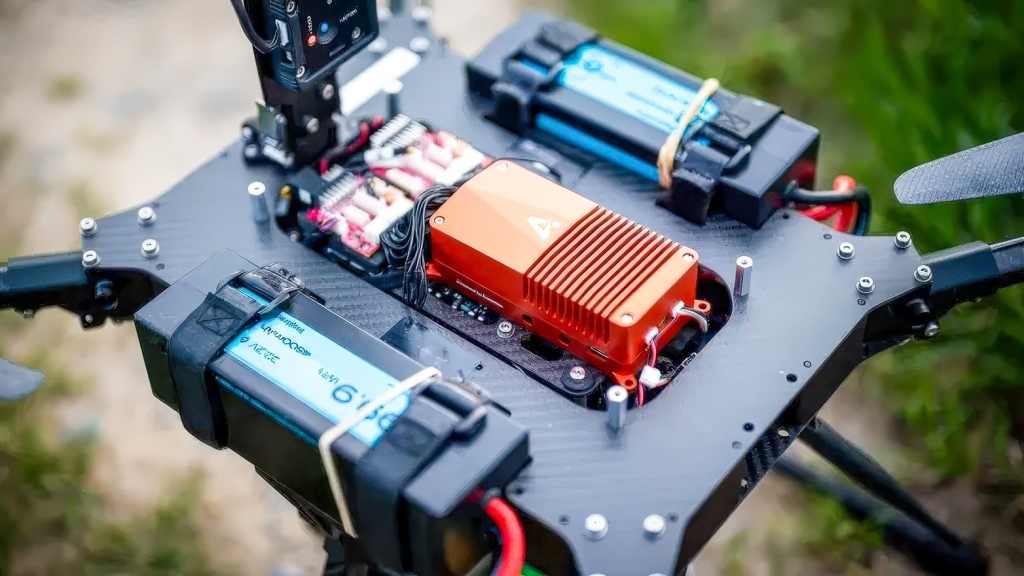
Skynode-S gives Ukrainian drones:
- AI Targeting: Can autonomously follow moving threats, “see” through camouflage, and ignore most signal-jamming with visual-inertial odometry.
Swarm Capability: Multiple drones fly together as a wolfpack, overwhelming enemy defenses and making FPV strikes coordinated—even without a continuous link to home base.
- Resilience: When things get hairy (think batteries dropping faster than your courage during a firmware update), the drone can still finish its mission—whether scouting, intercepting, or striking.
But—and this is important—Skynode-S is not Skynet. Humans still make the call on what gets targeted; the AI just does the flying and hunting after you point it in the right direction.
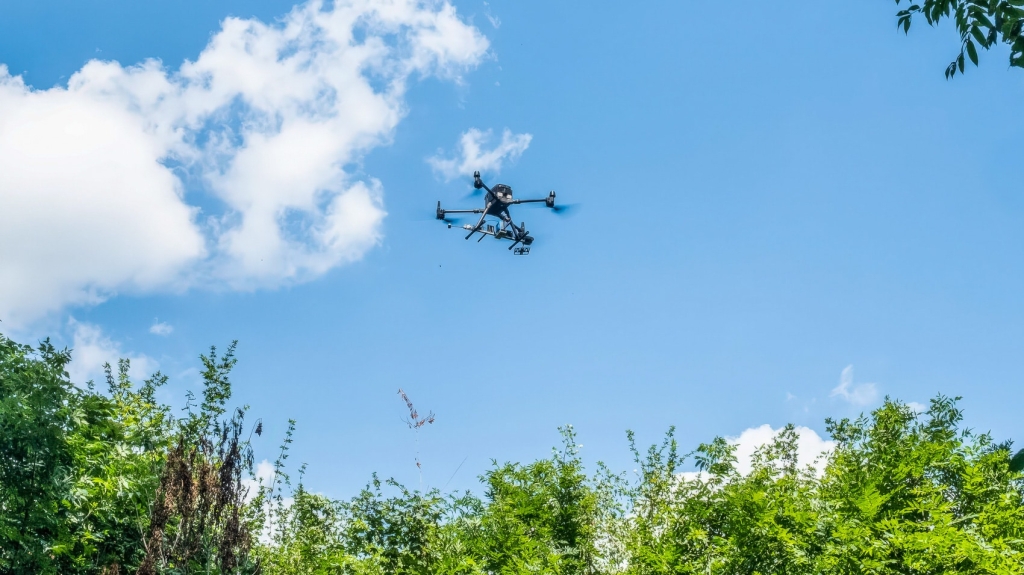
And for the drone geek side of things? These kits aren’t locking Ukraine into a closed ecosystem; they’re designed to play nice with the thriving Ukrainian drone industry, enhancing what’s already working without stepping on toes or, you know, “Burj Khalifa-sized egos”.
What Does This Mean for the Global Drone Community?
Alright, enough “death from above” talk—let’s reel it back for the weekend warriors among us.
- Battlefield Lessons: Drones aren’t just toys or video tools; in Ukraine, they’re shaping tactics, rewriting aerial warfare, and even giving NATO countries new ideas for integrating AI into field operations.
Tech Transfer: This deal isn’t just Ukraine’s windfall. It’s a testbed for battlefield AI, and you better bet drone innovation in Eastern Europe will ripple across borders, clubs, and maybe your own toolbox.
Ethics & Control: Skynode-S keeps humans in control—no rogue strikes, no autonomous kill decisions. Ethical lines matter, even when the fog of war feels thicker than humidity after a Texas storm.
FPV pilots, hobbyists, and future drone designers everywhere should watch this tech leap with a keen eye. Today’s war gear could be tomorrow’s rescue tool, mapping companion, or maybe—just maybe—what keeps your favorite flying buddy airborne when the signal goes haywire.
The DroneXL Take: Why This Matters to Pilots Like Us
So what’s the bottom line, fellow propeller heads? Ukraine is rolling out the sharpest drone brains on the block, and the move is about more than just missiles and maps—it’s about staying nimble, thinking ahead, and building on what works… while remaining humble enough to know that the next firmware, the next innovation, could flip everything on its head.
As pilots, we know success isn’t about winging it solo; it’s about community, adaptability, and not letting a bit of turbulence (or electronic warfare) ruin the mission. Ukraine’s leap with Skynode-S is a reminder to all of us that resilience, teamwork, and constant learning are the real flight skills.
So, whether you’re dodging soccer balls, flying rescue missions, or watching the world try to outsmart each other from above, remember: blue skies, calm winds, and may your batteries always last five minutes longer than you need them to!
Photographs courtesy of Forbes and Auterion
